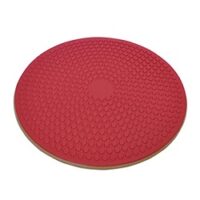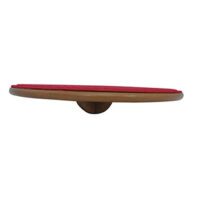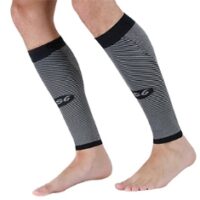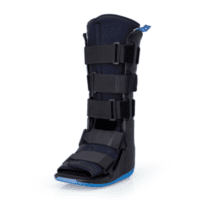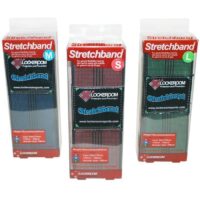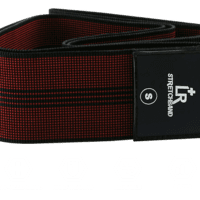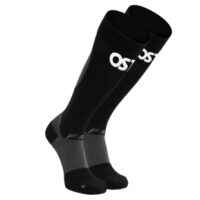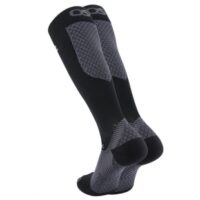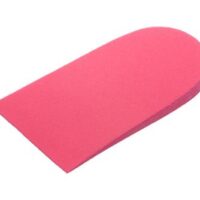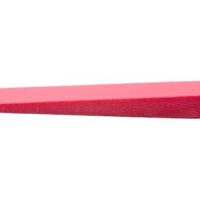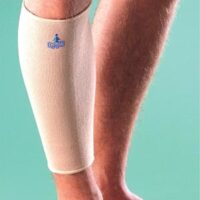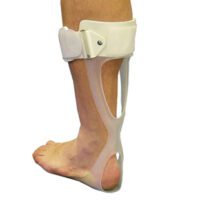Calf Strain
Article by John Miller


Calf Strain and Calf Tears
Causes, Treatment, and How Physiotherapy Can Help
Calf injuries can be excruciating and have a significant impact on your daily life, with “Calf Strain” being a prevalent issue. In this comprehensive article, we will discuss the causes, treatment options, and recovery strategies for calf muscle injuries, including mils calf strains and more significant calf tears.
Managing Calf Muscle Injuries
Calf muscle injuries, such as a “Calf Strain,” can occur due to various factors. One common cause is sudden forceful contractions during activities like sprinting or jumping, which can lead to a “Calf Tear” or “Calf Muscle Tear.” Inadequate warm-up exercises before strenuous activities can also increase the risk of a “Torn Calf.” Athletes involved in high-impact sports like athletics, football, and tennis are particularly susceptible to “Calf Strain.”

Differentiating Calf Muscle Injuries
Accurate diagnosis is crucial to determine whether you have a “Calf Tear” or a “Calf Strain.” In some cases, severe tears can resemble Achilles tendon injuries, necessitating advanced imaging techniques such as ultrasound or MRI for proper evaluation.
Addressing Complications: DVT and Pulmonary Embolism
In addition to the primary injury, calf muscle injuries can pose additional risks, such as deep venous thrombosis (DVT). If a clot originating in the calf travels to the lungs, it can cause pulmonary embolism, resulting in severe respiratory distress, strokes and potentially death If you experience symptoms like sudden shortness of breath or chest pain, immediate medical attention is essential.
Treatment Options and the Invaluable Role of Physiotherapy
Physiotherapy stands out as a cornerstone in the treatment and recovery of calf muscle injuries, including calf strain and calf muscle tears. This branch of healthcare offers numerous benefits that contribute to a comprehensive rehabilitation process.
- Pain Management and Inflammation Control: Immediately after sustaining a calf injury, rest, ice, compression, and elevation (RICE) are fundamental. A qualified physiotherapist can guide you in implementing these techniques effectively, ensuring that pain and swelling are managed optimally.
- Regaining Mobility: Scar tissue remodelling and mobility exercises are essential components of calf muscle injury recovery. Physiotherapists employ hands-on techniques and targeted exercises to enhance flexibility and range of motion in the injured calf.
- Strength Restoration: Progressive muscle strengthening is a key focus of physiotherapy for “Calf Tear” and other injuries. Through supervised exercises and tailored programs, physiotherapists help rebuild the strength of your calf muscles, facilitating the healing process.
- Eccentric Strength Development: Eccentric exercises, a specialty of physiotherapists, play a critical role in the return to dynamic movements. These exercises target the lengthening phase of muscle contractions and are vital for achieving full functionality post-injury.
- Restoring Function: High-speed, power, and agility exercises are gradually introduced into your rehabilitation program under the guidance of a physiotherapist. These exercises prepare you for a safe return to sports and daily activities, no matter whether you’ve suffered a “Calf Strain” or “Calf Tear”.
The Role of Physiotherapy in Enhancing Recovery
The benefits of physiotherapy extend beyond the specific phases of treatment. Physiotherapists offer ongoing support and education to help you better understand your injury, the healing process, and how to prevent future calf muscle injuries. They tailor your rehabilitation program to your unique needs, ensuring that your recovery journey is both effective and tailored to your individual circumstances.
The Benefits of Dry Needling
One notable technique used in physiotherapy for calf muscle injuries is dry needling. This procedure involves the insertion of thin, sterile needles into trigger points within the calf muscles. Dry needling can effectively release tension, alleviate pain, and promote healing. It complements other physiotherapy modalities and aids in the restoration of optimal muscle function.
Harnessing the Power of Kinesiology Taping
Another valuable technique in the physiotherapist’s toolkit is kinesiology taping. Kinesiology tape is applied strategically to the affected area to provide support, reduce pain, and enhance circulation. It can help alleviate discomfort associated with calf injuries, allowing individuals to engage in rehabilitation exercises more comfortably.
Conclusion: Prioritising Recovery with Physiotherapy
Recovering from calf muscle injuries like calf strain or tears can be challenging, but with the guidance of a qualified physiotherapist, it becomes a well-structured and empowering process. Physiotherapy is not only about healing but also about preventing future injuries and improving overall calf muscle health.
By following the recommended rehabilitation stages and embracing the benefits of physiotherapy, individuals can confidently progress from injury back to their pre-injury activities and sporting endeavours.
What to Do? Seek Professional Advice
For specific guidance regarding your calf muscle injury, whether it’s a “Calf Strain” or a significant “Calf Muscle Tear,” please book your appointment today with a qualified physiotherapist. Their professional knowledge will be instrumental in your journey towards a full recovery and improved calf muscle health.
Related Articles
- Calf Pain: This article offers insights into various causes of calf pain and potential treatments.
- Calf Muscle Pain: Causes And Relief Strategies: Readers will find information on identifying and managing calf muscle strains.
- Muscle Strain: It discusses different types of muscle strains, including calf muscle tears.
- Achilles Tendinopathy: This page covers the symptoms, causes, and treatment options for Achilles tendinopathy.
- Running Injuries: It provides information on common running injuries, including calf strains.
- Achilles Rupture: Causes, Treatment & Management Options: Readers can learn about the causes and treatment options for Achilles ruptures.
Article by John Miller
Calf Pain: Common Causes, Treatments and Solutions
Your Guide to Managing Calf Pain Effectively
Suffering from calf pain can throw a wrench in your daily routine, whether you're hitting the gym or just keeping up with your active lifestyle. Understanding the root causes of calf pain is essential for effective management and prevention. Let's dive into the common culprits of calf discomfort and how you can address them, guided by advice from physiotherapists.Calf Strains and How to Handle Them
Calf strains frequently occur among the physically active, marked by a sudden sharp pain or discomfort during movement. Adopting the RICE method—rest, ice, compression, and elevation—plays a pivotal role in treatment. More info: Strained Calf MuscleFacing Compartment Syndrome
Compartment syndrome is a serious condition where muscle pressure escalates to harmful levels, impeding blood flow and depriving muscle and nerve cells of necessary nutrients and oxygen. Prompt diagnosis is key to avoiding long-term damage. More info: Compartment SyndromeCombatting Cramps: Tips for Athletes
Muscle cramps often signal fatigue, dehydration, or electrolyte imbalance. Staying hydrated and maintaining a diet rich in essential nutrients can help prevent cramps, ensuring you stay on top of your game. More info: Muscle CrampsNavigating Achilles Injuries
Achilles injuries range from tendinopathy due to overuse to acute ruptures. These conditions require careful attention and, in the case of ruptures, immediate treatment to facilitate recovery and prevent further injury. More info: Achilles Tendinopathy

Incorporating New Research
Recent studies underscore the importance of targeted rehabilitation exercises and the potential benefits of other therapies in treating calf muscle pain. These advanced treatments can significantly improve outcomes, particularly for persistent cases. Please ask the advice of your physiotherapist or doctor on the nest treatment options or you.Dry Needling: A Game-Changer for Calf Muscle Pain
In recent years, dry needling has emerged as a revolutionary approach to alleviating muscle pain, offering a unique solution for those struggling with persistent calf discomfort. This technique involves inserting thin needles into specific points within the muscle, known as trigger points, to stimulate healing and relieve pain.Why Consider Dry Needling?
Physiotherapists recommend dry needling for several reasons:- Targeted Relief: By focusing on trigger points, dry needling works directly on the source of pain, providing rapid relief.
- Enhanced Recovery: This method not only reduces pain but also improves flexibility and increases blood flow, speeding up the recovery process.
- Complements Other Treatments: Dry needling can be used in conjunction with other physiotherapy treatments, such as manual therapy and exercises, to enhance overall effectiveness.
Is Dry Needling Right for You?
While dry needling is safe and effective for many, it's essential to consult with a physiotherapist to determine if this treatment is suitable for your specific condition. Your physiotherapist will assess your calf pain, taking into account your medical history and treatment preferences, to recommend the best approach for you. More info: Dry NeedlingConclusion: Embracing Comprehensive Care for Calf Muscle Pain
Calf pain need not hold you back from enjoying an active, fulfilling life. By understanding the causes, exploring treatment options like dry needling, and seeking professional advice, you can take control of your pain and embark on a path to recovery. Remember, a tailored approach to treatment, combining traditional physiotherapy methods with innovative techniques like dry needling, often yields the best results.What to Do? When to Seek Professional Advice
Experiencing calf muscle pain? Don't let it sideline you. Consult with a skilled physiotherapist or doctor for personalised advice and treatment options. Remember, early intervention can prevent complications and get you back on your feet sooner.Related Articles
- Calf Pain - Discover how common activities like running can lead to calf pain and the steps you can take to prevent it.
- Calf Strain & Calf Tear: Physio Treatment, And Recovery - Learn about the treatment and recovery process for calf strains and tears, essential information for anyone physically active.
- Achilles Rupture: Causes, Treatment & Management Options - Get insights into the causes of Achilles ruptures and the treatment options available for recovery.
- Compartment Syndrome - Explore the critical condition of compartment syndrome, its effects on the muscles, and the importance of timely treatment.
- Achilles Tendinopathy - Understand the symptoms of Achilles tendinopathy and the steps towards recovery.
- Leg Pain - This article provides a broad overview of leg pain, including causes related to the calf, and treatment options.
- Calf Pain Relief Products: Relieve Calf Muscle Pain Effectively - Discover how the OPPO 1010 Shin Support can provide relief for shin and calf pain.
- Moon Boot For Effective Lower Leg Injury Recovery - Find out how a moon boot can aid recovery from lower leg injuries, including those affecting the calf.
- Retrocalcaneal Bursitis - Learn about the impact of retrocalcaneal bursitis on the calf and treatment options.







